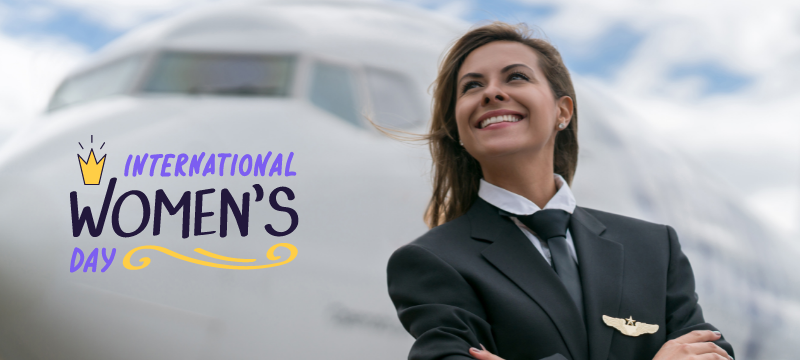Aviation is known for pushing the barriers of what seems possible. Even so, within the aviation industry, many groups have had to work especially hard to find their place, including women. Chances are, when you fly, your pilot and co-pilot are men. That’s because only 7% of all certified pilots are female. This statistic is slowly changing as more females choose this career path but there’s still a long way to go. In celebration of International Women’s Day and Women’s History Month, we’re exploring contributions made by women aviators who have worked tirelessly to move forward in a male-dominated industry.
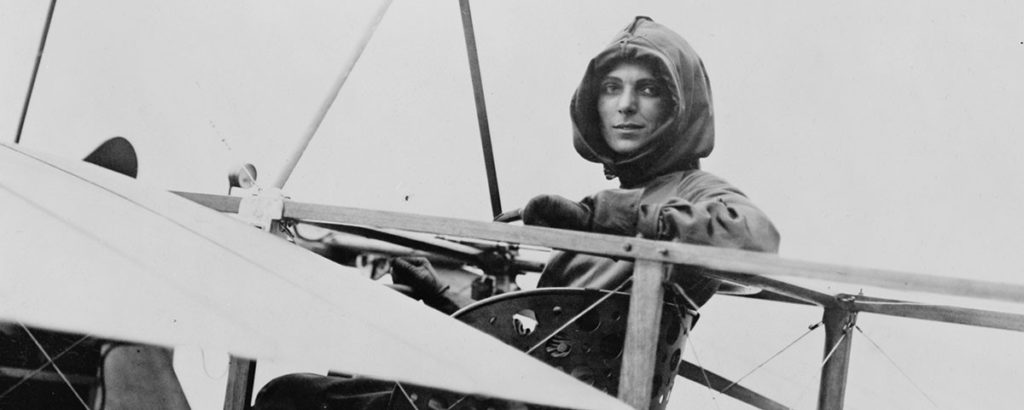
Harriet Quimby – The Adventure Seeker
Harriet Quimby has been described as a “modern woman in a not-so-modern age.” From a young age, Harriet sought adventure and loved writing. In a time when most women were concerned with marriage and family, Harriet was career-driven and took writing positions with newspapers in California and eventually New York. As fate would have it, Harriet was assigned to write a story about a Japanese aeronaut and instantly connected with the adventure aviation provided. She struck up a deal with a flight school owner to give her flying lessons and persuaded the newspaper she worked for to pay for them in exchange for her chronicling her journey to become a pilot. Harriet completed her training and was the first American woman to earn her pilot’s license on August 1, 1911, and less than a year later became the first woman to fly across the English Channel to France.
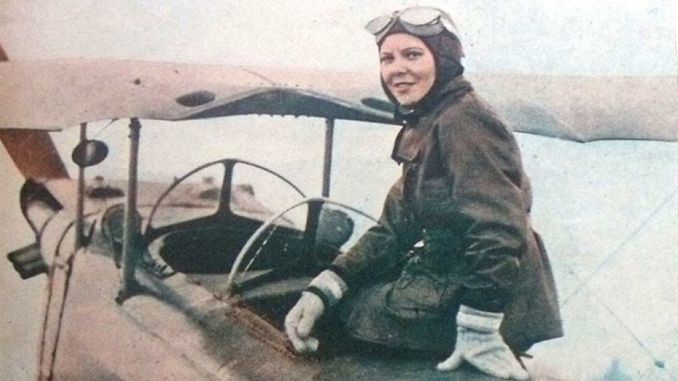
Sabiha Gökçen – The Fighter
Sabiha Gökçen was born into a challenging life. She was raised in poverty by her brother and sister in Bursa, Turkey. Her childhood was marked by the Turkish War of Independence, an event that would shape her decisions later in life. First, Sabiha’s life would change drastically after a chance encounter at a train station with Kemal Atatürk, the father of modern Turkey. Atatürk decided to adopt Sabiha, and at age twenty-three, she enrolled in a male-dominated aviation school with a focus on being a bomber pilot. She excelled in aviation school and was sent with seven Russian male students to complete advanced training in gliding. She then enrolled in the Military Aviation Academy. Sabiha would go on to participate in 32 military operations. Dedicated to aviation, Sabiha flew her last flight as a pilot at age eighty-eight before retiring her wings.
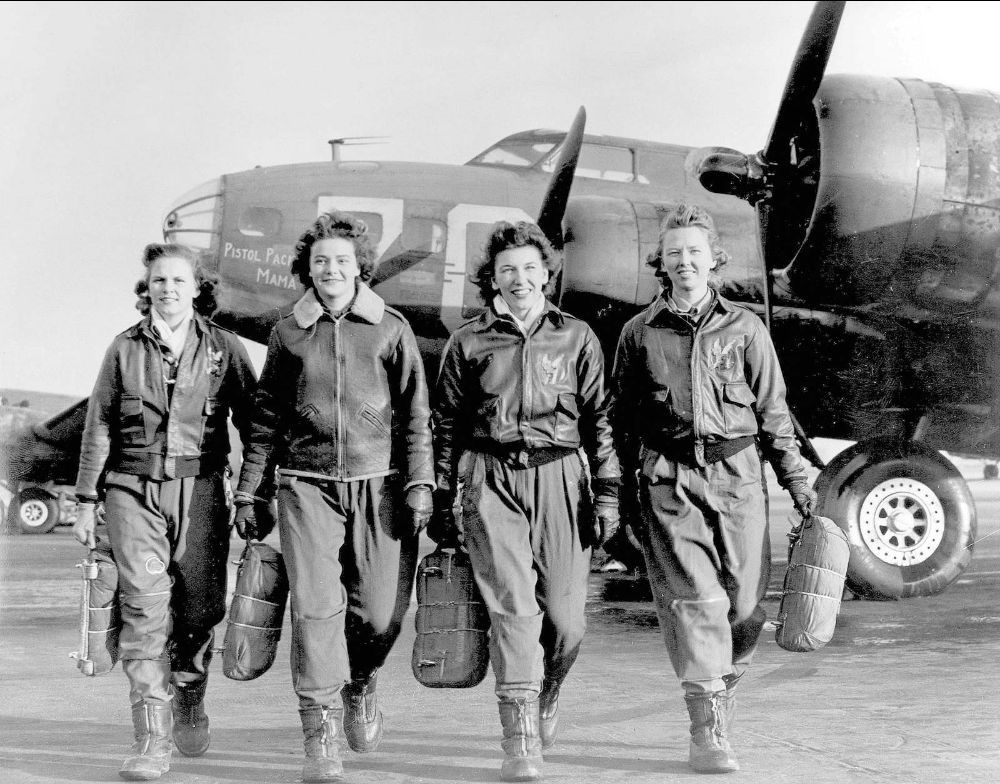
Women’s Airforce Service Pilots – The Unsung Heroes
When the United States entered World War II, it soon became evident that there weren’t enough qualified male pilots to keep up with the demand for transport flights while also fighting the war. Driven by equal parts necessity and invention, Army Airforces Commander, General Henry Arnold, activated the Women’s Flying Training Detachment (WFTD) which would later be known as the Women’s Airforce Service Pilots (WASP). It was a break that skilled female pilots like Jackie Cochran and Nancy Love had been advocating for even before the war. Over 25,000 women applied to be part of WASP, with fewer than 10% being accepted into the program. The WASP team would go on to log more than 60 million miles of flight ferrying aircraft, towing targets, making test flights, and serving as flight instructors. Thirty-eight women were killed during their WASP service, and because WASP was deemed a civil service and not part of the military, those killed during service were not entitled to burial benefits or survival benefits. Instead, fellow WASP members would use their own resources to get a fallen member home. In 1944, with victory looming, male pilots became more readily available, and the WASP program was unceremoniously disbanded.
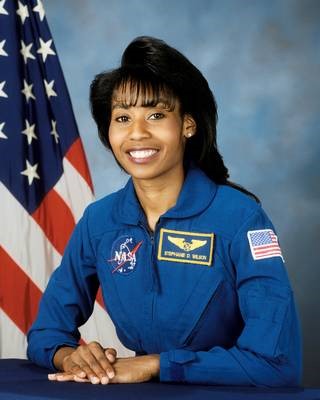
Stephanie Wilson – The Space Traveler
It was while she was interviewing Williams College Astronomy professor for a class project in middle school that Stephanie Wilson started dreaming about space exploration. That spark of interest led Stephanie to complete her Bachelor of Science in Engineering at Harvard University, her Master of Science in Aerospace Engineering at the University of Texas at Austin, and a NASA Graduate Student Researchers Fellowship. In 1996, she was selected as a NASA Astronaut and has completed three spaceflights to the International Space Station. Currently, Stephanie is training with eighteen other astronauts for the 2024 Artemis Mission, where the first woman and next man will walk on the moon. The goal of the Artemis mission is to establish sustainable exploration by the end of the decade, bringing space travel as a viable option for everyday citizens closer than ever before.
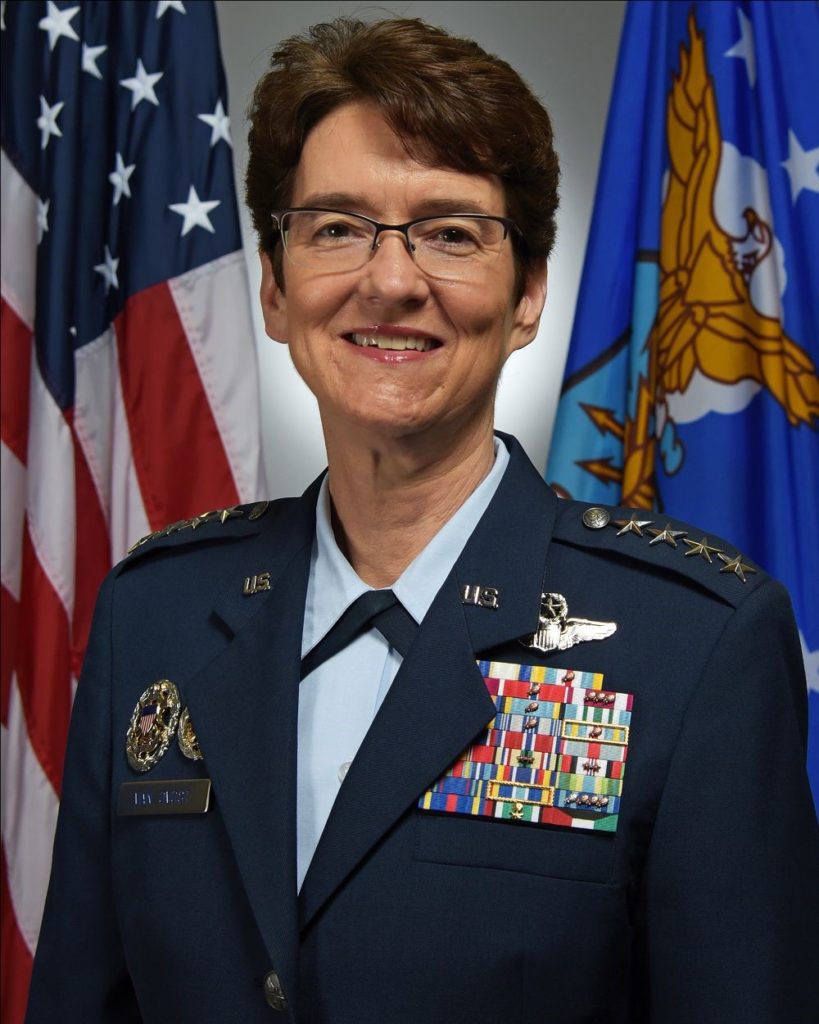
General Jacqueline D. Van Ovost – The Legacy Maker
Jacqueline Van Ovost seemed destined for the sky. Her fascination with aviation was sparked early in her life and supported by her father, who owned a flight operation. She actually earned her pilot’s license before getting her driver’s license. In 1988, she graduated from the Air Force Academy and dreamed of flying fighter jets. There was just one problem; women weren’t allowed to fly fighter jets in the military. She wrote letters to fifty higher-ranking officials to get the rule changed but was told no by all fifty. Undeterred, she found a loophole of sorts that would allow her to fly the aircraft she was after. General Van Ovost became a test pilot. As a test pilot, she could train on the fighter aircraft and gain the experience she desired. Throughout the years, General Van Ovost rose through the Air Force ranks to become the highest-ranking woman ever in the United States military. Along with running the Air Force Mobility Command, she continues to work on behalf of female aviators to change outdated rules and regulations that negatively impact women in the military. Click here to hear General Jacqueline D. Van Ovost tell her story in her own words to Today’s Show host Savannah Guthrie.
The contributions of women in aviation continue to be an essential part of the growth of the industry. Through annual events like Women Can Fly and our sponsorship of the aviation exhibit at Explore More Discovery Museum, Shenandoah Valley Airport is dedicated to bringing opportunities for future female aviators to be inspired. If the friendly skies pique your curiosity, Blue Ridge Aviation at SHD is a great place to start flight training. Or maybe you’d like to join the many talented aviation maintenance professionals that work behind the scenes to keep our nation’s aircraft soaring. Blue Ridge Community College has a program for just that based at SHD!
Thank you to these trailblazers and female aviators everywhere, for lighting the way for the next generation of women to soar!

